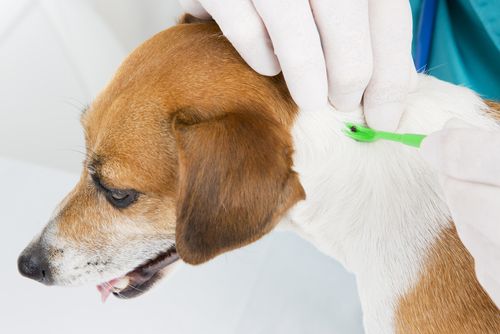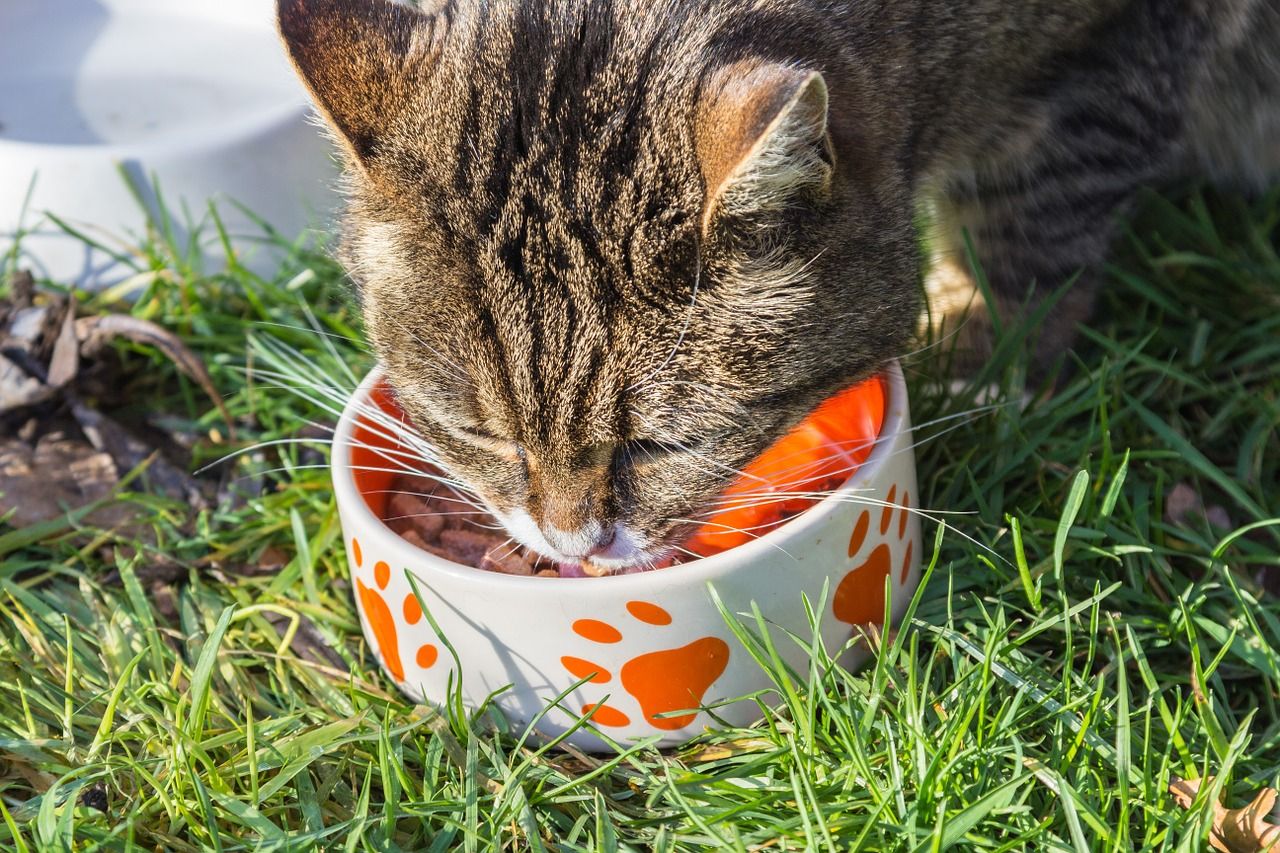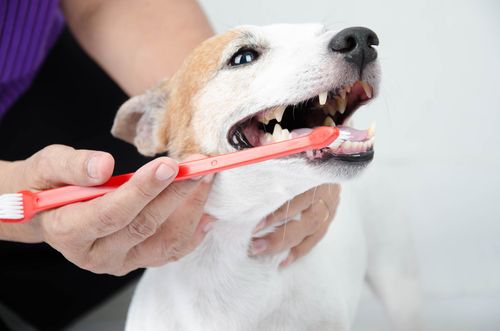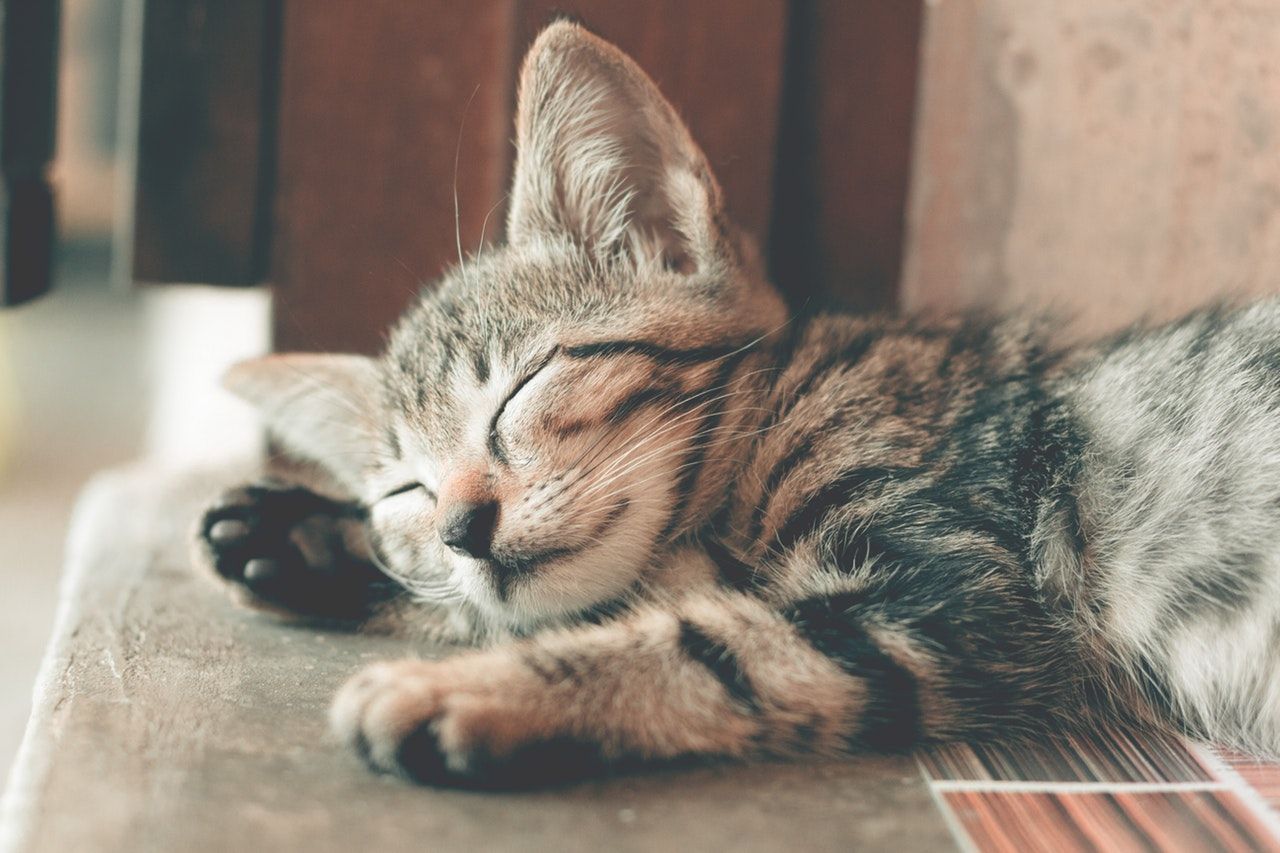
What are Ticks?
Ticks are arachnids that belong to the same family as spiders and mites. They are parasitic and feed on the blood of host animals. They are visible to the naked eye, but the start of around the size of a pinhead before swelling with blood as they feast.
Animals living in the Southern States or near heavily wooded areas will have increased exposure to ticks which like to live in thick long grass, as it allows them to attach to host animals as they walk by. They are most active during the late spring and summer months and they are not fussy which breeds of animals they feed on. However, animals that spend a lot of time outdoors will be more susceptible to ticks.
Symptoms of Ticks
Animals with few ticks can present with little or no symptoms and it is often not until there is a larger infestation or infection from the bites that signs become apparent. If and when symptoms do materialize they can include itching, scratching and visible red or inflamed irritations on the skin.
Ticks can transmit a number of diseases including Babesia, Cytauxzoonosis, Lyme disease, and Mycoplasma. Some animals can also have allergic reactions to tick bites which result in infections. Symptoms from these reactions or diseases can include fever, lethargy, loss of appetite and pain and can last for several days or several weeks. If you are concerned that your pet has developed illness from a tick bite, consult with your veterinarian as soon as possible.

A healthy and balanced diet is essential for a healthy and happy pet. Not only will it provide your pet with enough energy for his day to day activities, but it is also vital for proper brain function. An adequate diet is also particularly important for animals in the early stages of their development.
One of the most important things to remember when it comes to feeding your pet is to feed them by ‘life-stage’. Different animals, and in particular cats and dogs, require different nutrition at different stages of their lives. For example, puppies around 12 weeks of age will require around 3 meals a day and it is not until they reach around 6 months of age that this amount should be reduced. That said, your animal may prefer smaller and more frequent meals. The key to feeding your pet properly is understanding what works best for them.
Methods of Feeding
A popular method of feeding is known as ‘free-feeding’. This is where a bowl of food is left out so that a pet can eat as much or as little and as frequently as they prefer. This works best for dry foods since they do not spoil as quickly as the wet variety. Some studies show that this method results in over-eating and subsequent pet obesity. However, it may be the best option for you if you cannot stick to a feeding schedule.
Scheduled portioned feeding requires a strict routine that you need to be able to guarantee to stick to. Your pet will know when meal times are and ensure that they are ready for them, with cats coming indoors specifically at these times. This method limits the amount that your pet eats either by portion size or by time as some pet owners prefer to give their animals a specific time frame in which they must eat. This method also works well if you have pets that require medication to be mixed with their food, or have an animal on a calorie-controlled diet.
If you are unsure which method is right for your pet, consult with your veterinarian who will be more than happy to provide advice.
General Feeding Advice
Do NOT offer home-cooked meals. These may not meet the complex nutritional needs of your pet. Instead, stick to especially formulated pet foods.

As Spring warms up into Summer and the humidity and heat start to really set in, it's good to remember that, like every other member in your family, you need to take extra care with your pet. You can become dehydrated and dangerously hot, which can result in falling unconscious at best, vital organ damage, or at its very worst, death. The same is true for your pets!
We tend to think of animals as hardier than humans, but the truth is, dogs and cats begin to experience heatstroke (hyperthermia, medically speaking) at the same internal body temperature as humans do — 104° F. Severe heatstroke begins at 105° to 106° F internally, as well. It might be more difficult for you to gauge temperature with smaller pets such as hamsters, but there's one rule of thumb to keep in mind. Always watch the heat index. Meteorologist uses the heat index value to discuss what the temperature is once humidity is applied; it's this balance of heat and humidity that are dangerous to the health of your pet and you.
If the heat index is 90° F, you need to be sure to take precautions to protect your pets. They won't be able to ask you to turn on the air conditioning or ask you for extra water, or even to tell you they're starting to feel ill. Your pets depend on you to responsibly monitor the weather and give them what they need to stay healthy and comfortable.

Our pets are a beloved part of our family and sometimes this means that they have to travel with us when we undertake long journeys. As a general rule cats seriously dislike traveling and are almost always better off at home in their own environment. Dogs are more amenable to traveling, but there are still a number of considerations to make to ensure that the journey is both safe and comfortable for your pet.
Traveling by Car
The most important thing to remember is to ensure that your pet is not free to roam around the vehicle. Not only could this be distracting for the driver, but your pet will not be protected in the event of a crash. You may have seen dog seat belts being sold in some pet stores. Whilst they have been approved for sale, there is no reliable evidence proving them to be effective in accidents. Instead you should secure your pet in a crate that has been tethered to the car by a seatbelt or other secure method. Ensure that crate is big enough for your pet to change position if they become uncomfortable.
Do not put animals in the front passenger seat of your vehicle. If the airbag deploys then there is a chance that your pet could be seriously injured.
Do not ever leave your pet alone in the car. Animal thieves frequent parking lots and service stations looking for unattended pets to steal. Also leaving an animal alone in a warm car can be fatal. On a day where the outside temperature is 85F, the temperature inside your vehicle can reach 120F in just 10 minutes putting your pet at serious risk.
Do not allow your pet to stick his head outside a moving vehicle. Doing so risks injury or sickness by fast-moving air forcing itself into your pets’ lungs.
Never transport your pet in the back of an open pick-up truck.
Make plenty of bathroom breaks. This will also allow your pet to stretch their legs and have a drink.
As a general rule, if you wouldn’t allow your child to do it then do not allow your pet to do it either!

Don't ignore your pet's bad breath! Dental hygiene is often the cause of stinky breath, and it may indicate other important problems with your pet's health. We understand how easy it is to miss. Many of the problems that stem from poor hygiene occur where you can't see them - below your pet's gum line.
The first line of defense is always home care. But while some animals (especially dogs) tolerate their owners handling their mouths and brushing their teeth, most (especially cats) will struggle or act out. That can always make oral care difficult at best, and ineffective at worst.
The best way to ensure your pet's oral health is to have regular cleanings at our office. Discuss how often you ought to come in as well as a home hygiene regimen with your vet. This will also prevent dental issues from progressing to larger (and potentially deadly) internal issues, such as dysfunction or disease in the heart, kidneys, liver, or lungs.
In the wild, hiding pain, illness, or other weaknesses are survival instincts. Many times, your pet will have the same instincts, even in the safety and comfort of your loving home, so always keep an eye on your pet's eating habits and behaviors. Recognizing the difference between normal changes in mood and red flags can be difficult sometimes.
What you interpret as a persistent grumpiness may actually be a sign that your pet is in pain.
New irritability, shying away from being touched (especially on the face and around the mouth or throat), sluggishness, loss of appetite or difficulty eating, and lethargy are all behavioral signs which may indicate illness.
However, if you note any of the following physical changes, contact your vet immediately:
Red and swollen gums
Bleeding gums, especially when eating or when having teeth brushed
Swelling around the mouth
Oral abscesses
Abnormal chewing
Loose or missing teeth
Discolored teeth
Crusted build up at the edge of the gums
Persistent bad or fetid breath
Excessive drooling
Weight loss
Remember, preventing oral infections and disease will help your pet live a longer, healthier life. Furthermore, caring for your pet with regular cleanings now will save you money later. In 2013, VPI Pet Insurance priced the cost of treatment for dental diseases at more than $530 on average. Our prices for regular cleanings are much less than that!

What is Feline Distemper?
Also known as FPV and Feline Panleukopenia, Feline Distemper is a highly contagious viral disease that can be debilitating and even fatal. Kittens aged between 2 and 6 months are the most vulnerable to the disease, followed by pregnant and immune-compromised cats. Surviving FPV comes with immunity to any further infections by the virus.
What causes FPV?
The FPV virus is mainly transmitted through direct contact with the blood, feces or urine of an infected cat. It can also be spread by fleas that have been feeding on a contaminated cat. Humans can inadvertently pass FPV after handling the equipment used by contaminated cats if they do not follow proper handwashing protocols. The virus can live on surfaces for up to a year and is resistant to the majority of cleaning products except for household bleach.
FPV attacks the blood cells of an infected cat and in particular those in the bone marrow and intestinal tract. If the infected cat is pregnant, the virus will also attack the stem cells of the unborn kitten. Additionally, FPV makes your pet more vulnerable to other viral and bacterial diseases.
Symptoms of FPV
The primary symptoms of FPV include but are not limited to:
Anemia
Dehydration
Depression
Diarrhea (may be blood-stained)
High temperature
Loss of appetite
Rough coat
Vomiting
Other symptoms include lack of coordination, hiding away from owners, tucking feet away, or resting the chin on the floor for prolonged periods.

One of the most important parts of responsible equine ownership is caring for their teeth and ensuring they are strong, clean and healthy. This is because oral health can have a significant impact on the overall wellbeing of your animal. Left untreated, dental problems can cause problems with the function of the nervous system, muscular balance, cardiovascular health, imbalance of chemicals in the body, digestive system and the structural stability of the head, neck, and tongue. Most equine dental problems begin as mild and treatable occurrences. However, they can rapidly increase in severity if left untreated. Regular check-ups by an experienced and qualified equine dentist are vital.
Symptoms of equine dental problems
One of the reasons that regularly scheduled check-ups are important is because many horses don’t display any clear symptoms of dental issues until they develop into major problems or begin to cause them pain. However, many responsible equine owners can tell when their horse isn’t feeling quite right. If they are unable to establish what is wrong, then there is a good chance that dental problems may be to blame.
Some of the signs and symptoms of equine dental problems that you can look out for include:
Tilting the head when not eating
Head tossing or shaking
Excessive saliva
Nasal discharge
Facial swelling
Foul breath
Dropping food
Stiffness on one side
Napping, bucking or rearing
Unexplained weight loss
Grass packing in cheeks
Slow to eat or dips feed or hay in drinking water
Nervousness or a dislike of being handled
In some cases, behavior changes can also be a sign of dental problems. These could be mouthing or chewing the bit, unexplained subtle lameness, resisting bridling or even rearing or bolting.

When a person or animal is unwell, external symptoms and blood test results may only tell a small part of the story. Advances in medical technology mean that it is now possible to see what is actually happening inside you, and one of these procedures is known as an endoscopy.
An endoscopy can be used to view and analyze many parts of a horse including the upper respiratory tract, and parts of the gastrointestinal, reproductive and urinary tracts. This helps veterinarians to make an accurate diagnosis and recommendation for treatment for a wide range of health problems.
Types of endoscopy
There are two main types of endoscopy available in the equine veterinary field. These are:
Fiberoptic Endoscope
This is the most common type of endoscope used for investigative surgery in horses. The endoscope is made up of a bunch of optical fibers that are enclosed within a waterproof rubber tube. The tube is passed into the horse’s body either through a natural body cavity or a surgical incision. The area is illuminated by a light source that passes through the fiber optics and then examined using an eyepiece that is attached to the external end of the fiber-optic cable.
Video Endoscope
This more advanced version of the endoscope has a tiny microchip video camera on the end of the scope which relays live feedback to a television screen in the room. This means that multiple people can view the feed, and it can be recorded and played back at a later time.
Did you know that despite doing all we can to keep our animals safe, approximately one in three pets in the United States will become lost at some point during their lifetime? This is a scenario that no caring and the committed owner wants to think about, but by understanding that it is something that could happen, we can take prepare for the eventuality. One of the best ways of doing this is by microchipping your pet.
Why should I microchip my pet?
Many owners are quite content with using collars and tags as identification for their beloved animal. While microchipping isn’t intended to replace this traditional and highly successful practice, it can complement it. Microchips are placed under your pet’s skin and, at the same size as a grain of rice, they are impossible to locate precisely once they have been inserted. This makes them tamper-proof and accident-proof. While conventional tags and collars can be removed by thieves or can fall off, microchipping is permanent.
Studies have shown that microchipping is also a much more effective and efficient way of reuniting pets with their owners and animals who are microchipped are significantly more likely to make it back home. Since many animals look alike, ownership disputes are a fairly common occurrence in neighborhoods where there are a number of pets of the same type and breed. However, microchipping can also prove invaluable when it comes to proving who the rightful owner of your pet is. Although having your details on the chip is not proof of ownership, disputes nearly always go the way of the person who registered with the microchip provider.

When it comes to bringing a new pet into your home, preparation is crucial in order for them to make a successful transition. It can take days, weeks or even several months for your pet to consider your home its new home. Here are our top tips for helping your new pet settle in.
Supplies and equipment
Ensure that you have all of the supplies and equipment that your new pet will need. This includes fundamental items such as a bed, water bowl and food, as well as toys and other items to stimulate their cognitive development and keep them entertained. Remember that your pets’ emotional wellbeing and mental stimulation is just as important as their physical needs.
Prepare any other pets in the home
Ensure that any other pets in the home are up to date with their vaccinations. Whilst shelters do their best to treat any viruses, occasionally re-homed pets do bring new diseases with them that could be transmitted to existing pets in the household.
You may also have to introduce existing pets to your new pet gradually until they get used to one another.
Register with a Veterinarian
As soon as you bring your pet home you should register with a veterinarian and make an appointment for your pet to have a thorough health check. Ideally, this should be done within a week of their arrival. They can advise on the correct vaccination protocol for your pet and ensure that there are no underlying illnesses or concerns.
You should also speak to your veterinarian about spaying or neutering your pet. There are thousands of animals in shelters across the country that are desperate for loving homes. Limiting population growth further by having your pet spayed or neutered is a responsible course of action for any owner.
Establish rules and guidelines in advance
Establishing some basic house rules ahead of your pets’ arrival can help create a routine that your pet will quickly adopt as his own. Knowing what to expect will also help him settle in much faster. Assigning specific responsibilities to family members can help them bond with your pet and take ownership of their commitment as a pet owner.
Being consistent with rules for your pet will make training them much easier. For example, do not start off by letting your pet sleep on the sofas if this is not a behavior you want to continue in the future.






